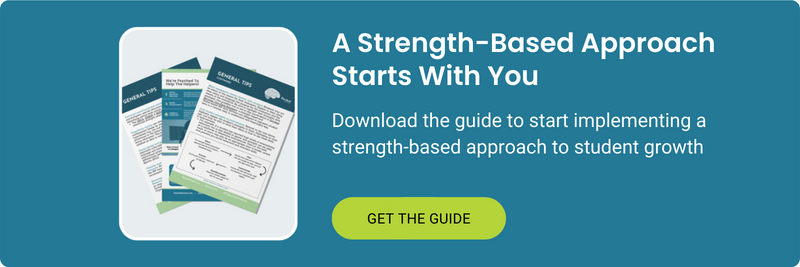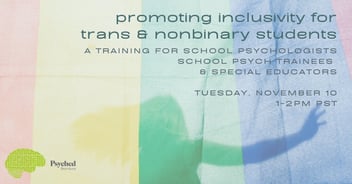
Dear General Education Teachers,
POP QUIZ!
-
How many students in your classes have an IEP?
-
How many students are being evaluated to see if they should have one?
-
How many students do you think should have one, but don’t?
Wait, back up. Before we get into that, answer this: What is an IEP? If you don’t know, step away from the computer and go straight to your special education teacher. They are your Yoda. Learn from them and become wise you will. Then, come back and answer questions 1-3.
Now ask yourself,
-
What details are in your students’ IEPs, and who put them there?
-
Who is responsible for implementing them?
-
How do you feel about them? (or, for you non-feeler types: What do you think about them?)
Were you able to answer each of these questions? If so, great! This article may not be for you. If not, read on.
GRADING TIME
Before the school year began, you should have received (and signed for) a copy of each special education student’s IEP. If you have a student being evaluated right now, you may soon be getting one. If you have a student you think should be evaluated, well…we’ll loop back to that another day.
Perhaps you have noticed that IEP paperwork is not especially user-friendly, and you haven’t spent much time with it for that reason. Or perhaps you think it simply contains “good teaching practices,” which you do anyway. Perhaps you think it’s the special education teacher’s job to know.
Rest assured, there is really important and useful information in every IEP, but translating that information into reality is not always intuitive. Which takes us back to our quiz.
What Details are in An IEP?
If you haven’t had much experience with special education, be prepared for a ton of new vocabulary. Here are some basic terms to know, but let’s back up and start with the biggie: IEP. It stands for Individualized Education Plan, and here is what it will tell you:
- Disability classification: The legally defined disability category that makes your student eligible for special education.
- Present levels of functioning: A summary of the academic, social, behavioral, self-help, and motoric skills your student was performing the last time the team met.
- Goals: The skills your student is ready to learn next, but can only meet through individualized instruction.
- Accommodations: Ways for you, as the teacher, to “even the playing field” so that your student can meet their full potential.
- Services: The specialized support your student receives from experts in special education (speech therapy, occupational therapy, counseling, resource classes, etc.).
Who is responsible for implementing the IEP?
You are. You and everyone else who serves the student. It may also be the bus driver. Your administrators. The custodians. The cafeteria workers. The art teacher. The point is, children with disabilities don’t stop having disabilities just because they enter a general education classroom, and the special education teacher is not the only one who can (or should) support them. An IEP is simply a road map – a legally binding road map – that helps educators traverse education for an individual child. You don’t have to take our word for it. Check out these articles on the benefits of inclusion:
- Outline of the Most Recent Review of Evidence on Inclusive Education
- The Benefits of Inclusive K-12 Education
Who Made the IEP?
You did! Maybe not you specifically, but one of your general education colleagues attended the meeting, along with a special education teacher, administrator, parent, other pertinent professionals, and sometimes the students themselves, to help create this road map of champions.
Every student with an IEP has a meeting at least once a year to review their goals, services, and accommodations. The team discusses what is working and what isn’t. You may get an invitation to some of these meetings, which gives you a chance to give your feedback directly to the team.
You probably won’t be asked to attend every IEP meeting, but you should give feedback any time one of your students with an IEP has one. You may get a piece of paper in your box asking for feedback, or you may get a friendly email reminder to send feedback about your student’s strengths and needs.
It’s your job to share what you know about your student. You’re the expert, after all. Only you can prevent ineffective accommodations for your classroom. Remember, you’re legally bound to implement everything in the IEP, so the more you participate in the process, the more you can help your student!
If you want to know more about a particular disability, ask your friendly school psychologist! We love to share our knowledge of learning disabilities and can review the student's most previous psychological evaluation with you. If you'd like more resources and support, contact us today for a free consultation!
Post by Marysa Enis, Maria Gregory, and Amy Shatila





